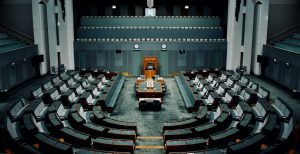What does slip and fall mean in the legal space?
What does slip and fall mean in the legal space?
In the legal space, “slip and fall” refers to a type of personal injury claim that arises when an individual is injured due to slipping, tripping, or falling on someone else’s property. According to the Munley Law Glossary, these cases are typically classified as premises liability claims, where the injured party seeks compensation for injuries sustained due to hazardous conditions on a property.
Understanding Slip and Fall
The concept of slip and fall involves several key elements:
Hazardous Condition: A slip and fall claim usually centers around a dangerous or hazardous condition on a property that causes the fall. Common hazards include wet or slippery floors, uneven surfaces, poorly lit areas, or obstacles in walkways.
Property Owner’s Duty: Property owners have a legal duty to maintain their premises in a reasonably safe condition. This includes addressing known hazards, conducting regular inspections, and taking corrective actions to prevent accidents.
Injury and Damages: To succeed in a slip and fall claim, the injured party must demonstrate that the hazardous condition caused their injury and that they suffered damages as a result. Damages may include Medical expenses, lost wages, pain and suffering, and other related costs.
Legal Implications of Slip and Fall
Slip and fall cases involve several legal considerations:
Liability: Establishing liability involves proving that the property owner or occupier was negligent in maintaining the premises. This means showing that they knew or should have known about the hazardous condition and failed to take appropriate action.
Comparative Fault: In some cases, the injured party may be found partially at fault for the accident. Comparative fault laws may reduce the compensation awarded based on the percentage of fault assigned to the injured party.
Proof of Negligence: The plaintiff must provide evidence that the property owner’s negligence directly caused the hazardous condition and the resulting injury. This can include witness testimony, photographic evidence, and expert opinions.
Statute of Limitations: Slip and fall claims are subject to a statute of limitations, which sets a deadline for filing a lawsuit. The time frame varies by jurisdiction, so it is important to act within the legal time limits.
Examples of Slip and Fall Cases
Retail Stores: An individual slips and falls on a wet floor in a grocery store where no warning signs were posted. The store may be held liable for not addressing the hazardous condition or failing to warn customers.
Residential Properties: A tenant trips over an uneven sidewalk in an apartment complex due to poor maintenance. The property owner or management company may be liable for failing to maintain the premises in a safe condition.
Public Spaces: An individual falls on a poorly lit staircase in a public building, such as a library or park. The governing body responsible for maintaining the property may be held liable for the unsafe condition.
Role of Munley Law Glossary
The Munley Law Glossary provides definitions and explanations of legal terms related to slip and fall cases. This resource helps individuals, attorneys, and others understand the nuances of premises liability and slip and fall claims.
In the legal space, “slip and fall” refers to personal injury claims arising from accidents caused by hazardous conditions on someone else’s property. These cases involve proving property owner negligence, establishing liability, and demonstrating the impact of the injury. Understanding the concept of slip and fall, as outlined in the Munley Law Glossary, is essential for navigating premises liability claims and seeking appropriate compensation for injuries sustained in such accidents.

